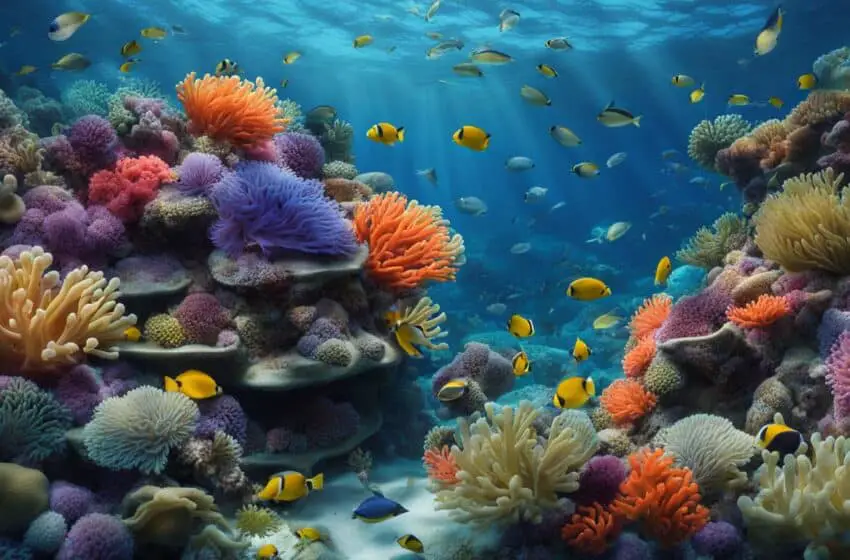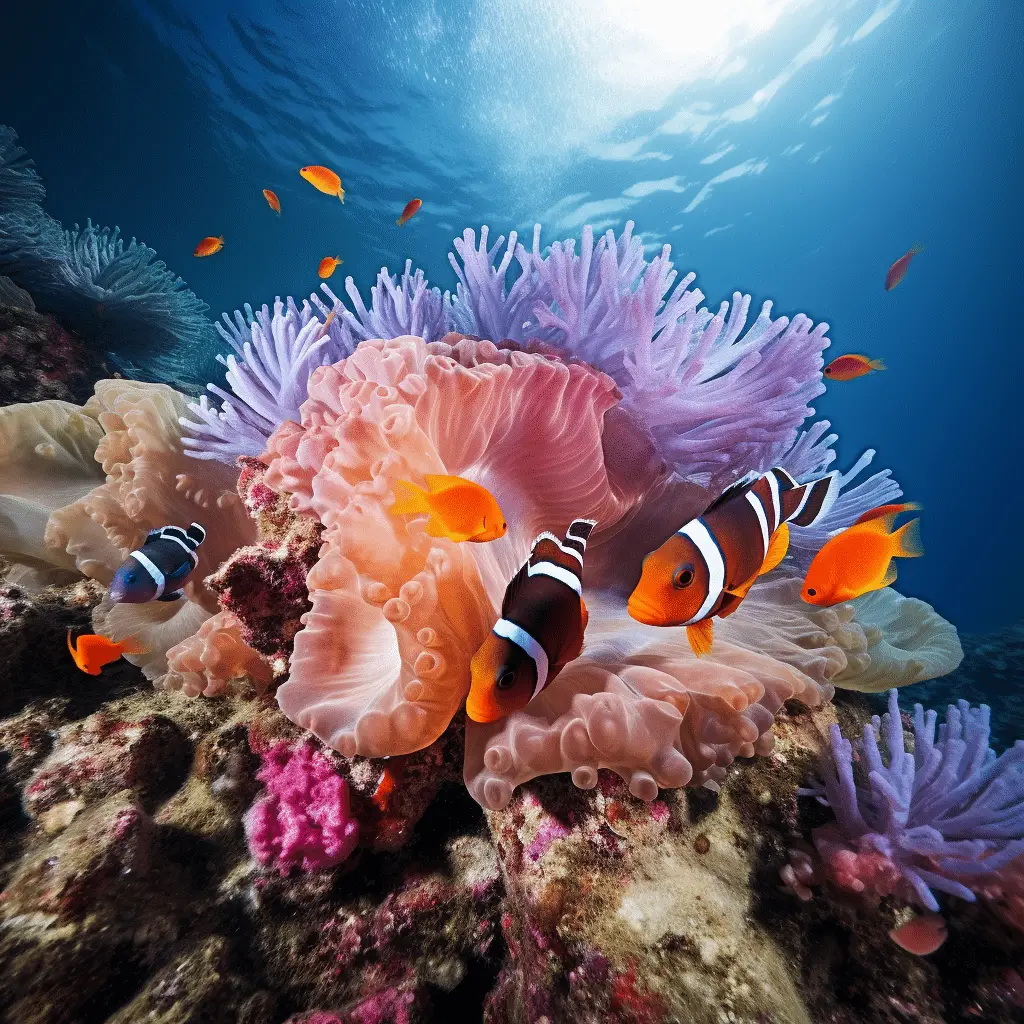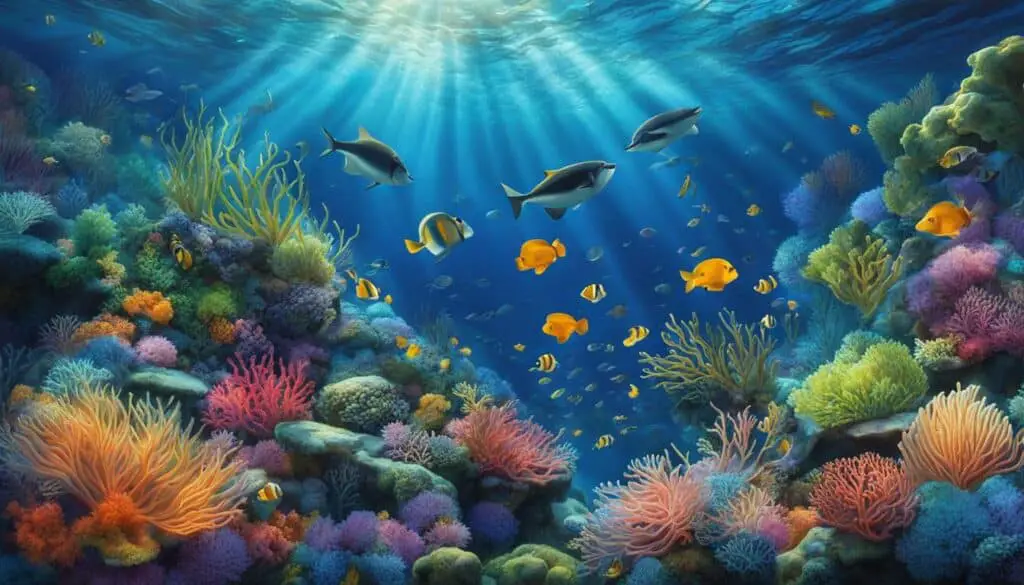Anemones And Coral Reefs: Essential Marine Biodiversity

Anemones And Coral Reefs Biodiversity: As a marine biologist, I have always been captivated by the enchanting world beneath the waves. The vibrant colors and intricate ecosystems of anemones and coral reefs never fail to amaze me. These majestic organisms are not only visually stunning but also play a vital role in maintaining the delicate balance of our underwater world.
Anemones, with their graceful tentacles and mesmerizing colors, form symbiotic relationships with clownfish, creating a remarkable example of nature’s harmony. The diversity of anemone bleaching offered by Reef Republica showcases the beauty and variety of these sea creatures, each with unique characteristics that add to the allure of coral reefs.
Furthermore, anemones and coral reefs are essential for marine biodiversity. Coral reefs, the largest living structures on our planet, provide a home for countless species and contribute to the overall health of our oceans. The symbiotic relationship between anemones and clownfish exemplifies how different species work together to benefit each other.
Key Takeaways:

- Anemones and coral reefs are visually striking and contribute to the overall beauty of underwater ecosystems.
- Anemones form symbiotic relationships with clownfish, showcasing nature’s harmony.
- Coral reefs are the largest living structures in the world and support a vast array of marine species.
- Anemones and coral reefs are crucial for maintaining marine biodiversity.
- Conservation efforts are vital to protect these delicate ecosystems from threats such as coral bleaching and habitat destruction.
The Importance of Anemones and Coral Reefs in Marine Biodiversity
Anemones and coral reefs are not only visually stunning but also essential for marine biodiversity. Coral reefs, the largest living structures in the world, are composed of tiny animals known as coral polyps. These delicate organisms, along with anemones, contribute to the health and allure of reef ecosystems.
The symbiotic relationship between anemones and clownfish showcases how different species work together to benefit each other. Anemones provide protection and a food source for the clownfish, while the clownfish help keep their host anemone clean and healthy. This remarkable partnership exemplifies nature’s interconnectedness and the intricate web of life within coral reef ecosystems.
Unfortunately, coral reefs and anemones are facing numerous threats, including coral bleaching caused by rising water temperatures and human-induced habitat destruction. These endangered underwater ecosystems require immediate attention and conservation efforts to ensure their survival. By taking action to protect and restore coral reefs, we can safeguard not only the beauty but also the vital role they play in maintaining marine biodiversity.
Conclusion: Preserving the Beauty and Vitality of Anemones and Coral Reefs
Exploring the beauty of anemones and coral reefs has taken us on a captivating journey into the underwater world of wonder, diversity, and complexity. These vibrant organisms not only contribute to the health and allure of reef ecosystems but also hold immense ecological importance. However, they are facing significant threats such as coral bleaching and habitat destruction.
Preserving these delicate underwater ecosystems is a responsibility we all share. Reef restoration and conservation efforts play a pivotal role in safeguarding the beauty and vitality of anemones and coral reefs. By working together, we can ensure the long-term survival of these endangered underwater environments.
Reef restoration efforts focus on rehabilitating damaged reefs, improving their resilience, and nurturing new growth. Through initiatives such as coral transplantation, reef monitoring, and protecting habitats, we can help revive their splendor and protect the countless marine creatures that rely on these underwater sanctuaries.
Conservation and education efforts are equally essential. Raising awareness about the critical role of anemones and coral reefs in sustaining marine biodiversity is key to fostering a collective sense of responsibility. By promoting sustainable practices, supporting local conservation organizations, and advocating for the protection of underwater ecosystems, we can make a significant difference in preserving the beauty and vitality of anemones and coral reefs for generations to come.

FAQ
What role do anemones play in reef ecosystems?
Anemones play a crucial role in maintaining the delicate balance of reef ecosystems. They provide shelter and protection for many marine species, contribute to the health and allure of coral reefs, and participate in symbiotic relationships with clownfish.
How are anemones and coral reefs related?
Anemones, along with coral polyps, contribute to the health and allure of coral reefs. Both organisms are visually striking and essential for marine biodiversity.
What is the symbiotic relationship between anemones and clownfish?
The symbiotic relationship between anemones and clownfish is a remarkable example of nature’s harmony. Clownfish rely on anemones for shelter and protection, while the clownfish provide food scraps and defend the anemone from predators.
What threats do anemones and coral reefs face?
Anemones and coral reefs face threats such as coral bleaching, habitat destruction, pollution, and overfishing. These threats endanger their survival and the delicate balance of reef ecosystems.
Why is reef conservation important?
Reef conservation efforts are crucial to preserve the beauty and vital importance of anemones and coral reefs in underwater ecosystems. These efforts help protect endangered underwater environments, support marine biodiversity, and maintain the ecological balance of coral reef ecosystems.



